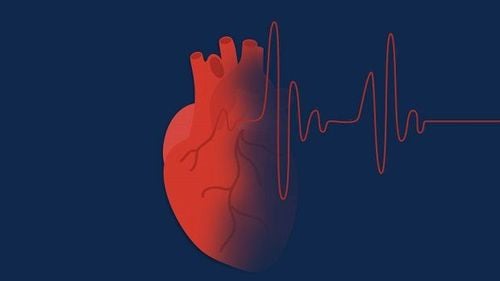This is an automatically translated article.
The article was professionally consulted with Specialist Doctor I Pham Thi Yen - Obstetrician-Gynecologist - Department of Obstetrics and Gynecology - Vinmec Hai Phong International General Hospital.Cervical cancer is a type of cancer that occurs in the cells of the cervix. The main cause of this disease is the human papillomavirus (HPV), which is a sexually transmitted disease. You can reduce your risk of developing cervical cancer by getting screened and vaccinated against HPV infection.
1. What is cervical cancer?
Cervical cancer (English name is Cervical cancer) occurs when the cells of the cervix are changed or mutated. Cervical cancer can affect tissues deep inside the cervix and can spread to other parts of the body (metastasize), usually the lungs, liver, bladder, vagina, and rectum.Most cases of cervical cancer are caused by infection with the human papillomavirus (HPV), which is a vaccine-preventable virus.
Cervical cancer usually grows slowly, so it has time to find and treat it before it causes more serious problems.
Women between the ages of 35 and 44 are the most common age to get this disease. However, more than 15% of new cases are in women over the age of 65, especially those who don't usually go for regular health check-ups.

2. Symptoms, causes and risk factors of cervical cancer
2.1. Symptom
Early cervical cancer often has no signs or symptoms. Signs and symptoms of more advanced cervical cancer include: Vaginal bleeding after intercourse, between periods, or after menopause Unusual, foul-smelling or Vaginal bleeding Pelvic pain or pain during intercourse2.2. Reason
Cervical cancer begins when healthy cells in the cervix develop changes (mutations) in their DNA. A cell's DNA contains instructions that tell the cell what to do.Healthy cells grow and multiply at a certain rate, eventually dying in a predetermined time. However, when the mutation occurs, the cells grow and multiply beyond the body's control and they do not die. These abnormal cells accumulate to form a mass (tumor). Cancer cells invade nearby tissues and can break away from the tumor to metastasize elsewhere in the body.

2.3. Risk factor
Cervical cancer risk factors include:Multiple sex partners: The more sex partners you have, and the more different sex partners you have, the higher your risk of contracting the virus. Early sexual activity: Having sex at an early age increases the risk of HPV. Other sexually transmitted infections (STIs). Having other STIs such as chlamydia , gonorrhea , syphilis , and HIV/AIDS increases your risk of getting HPV. Weakened immune system: You may be more likely to develop cervical cancer if your immune system is weakened by medical conditions and you have a viral infection. Smoking: Smoking is linked to squamous cell cancer of the cervix.

3. Tests and diagnostic techniques for cervical cancer
To diagnose cervical cancer, your doctor may perform:Pap smear : This is done by scraping cells from the cervix. These cells will then be sent to a laboratory for analysis and detection of abnormalities. Colposcopy: This technique uses a low-powered microscope to help the doctor view the cervix and determine the abnormal location and area for the biopsy. However, a biopsy can be done without colposcopy. Biopsy: The doctor will take a sample of tissue from the area where disease is suspected. If cancer is determined, the doctor will evaluate the local extent of the cancer to determine if surgical removal is an appropriate option. Imaging techniques are often helpful to determine if the cancer has spread. The following imaging techniques may be performed:
Whole-body CT scan: This procedure combines special X-ray equipment and a computer to create multiple pictures of the inside of the body. For example, a chest CT scan is often used to find out if cancer has spread to the lungs. Body MRI: This imaging technique uses a strong magnetic field, radiofrequency pulses, and a computer to create detailed images of the body. Chest X-ray: This technique creates X-ray images of the lungs. PET scan: This nuclear medicine imaging technique uses a small amount of radioactive material to help determine the extent of cervical cancer. PET scans can be superimposed on CT or MRI scans to create special views and make the diagnosis clearer or more accurate.

X-rays chest to check lungs Blood tests to see if it has spread to the liver An intravenous pyelogram (IVP) or CT scan to check the urinary tract; cystoscopy that can examine the bladder and urethra Colposcopy to look directly into the vagina and evaluation Proctosigmoidoscopy and radiography (Barium Enema) technique for rectal examination CT, MRI, or PET Lymph node scans Doctors use these diagnostic techniques to determine the stage of cancer and are classified according to the extent of the damage, how deep the lesions are, and how far they have spread. Cervical cancer ranges from stage 0 (least severe) to stage IV (metastatic disease, most severe).
To meet the needs of women for gynecological cancer screening, Vinmec International Hospital currently offers a screening package and early detection of gynecological cancer, helping to detect 4 diseases early: Cancer cervical cancer, breast cancer, uterine cancer and ovarian cancer even if the patient has no symptoms.
The subjects who should use the Gynecological cancer screening and early detection package include:
Female customers, over 40 years old Customers wishing to be able to screen for pathology of breast-gynecological cancer (neck) uterus, uterus, ovaries) Customers with high risk of cancer – especially customers with a family history of breast cancer, gynecology Women of reproductive age, perimenopause Menopause and menopause Women are having symptoms of breast cancer, gynecological such as: pain in the breast, lump in the breast, bleeding outside the menstrual period, pain in the abdomen, etc.
Please dial HOTLINE for more information or register for an appointment HERE. Download MyVinmec app to make appointments faster and to manage your bookings easily.
References: webmd.com, radiologyinfo.org, mayoclinic.org














